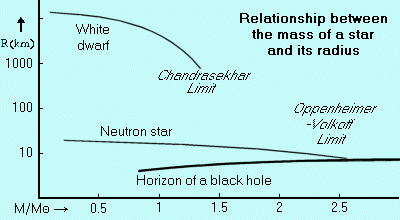Oppenheimer-Volkoff limit

The Oppenheimer-Volkoff limit is the upper limit for the mass of a neutron star beyond which it must collapse to become a black hole or, possibly, a quark star.
Its value was not known exactly because the properties of neutron degenerate matter can only be estimated, but it was generally thought to be between 2 and 3 solar masses. However, measurements of a gravitational wave event in 2017, in which it is thought that two neutron stars merged to form a black hole, have suggested a more precise value for the limit of 2.17 solar masses. An approximation of the limit was first given by Robert Oppenheimer and the Canadian physicist George Volkoff in 1939.
Because Oppenheimer and Volkoff based their estimate on the work of the American physicist Richard Tolman, the quantity is sometimes called the Tolman-Oppenheimer-Volkoff limit.


